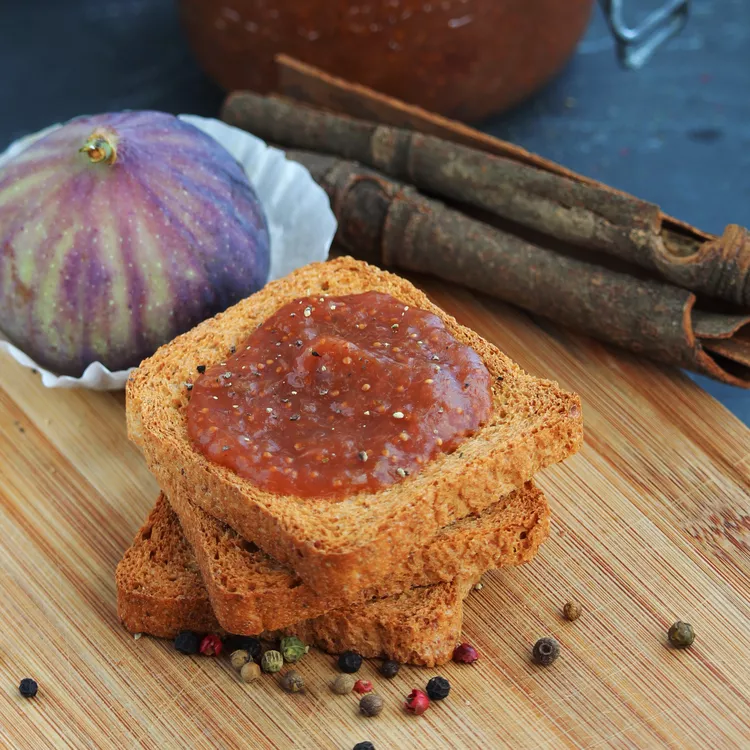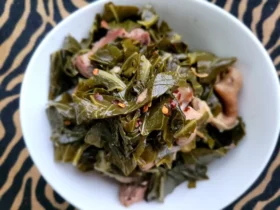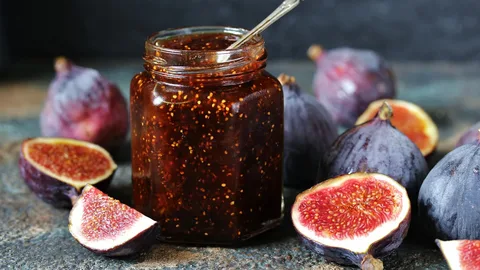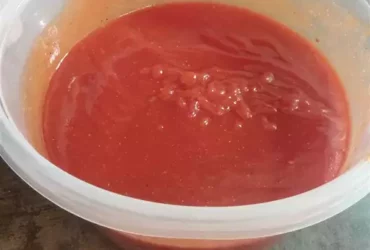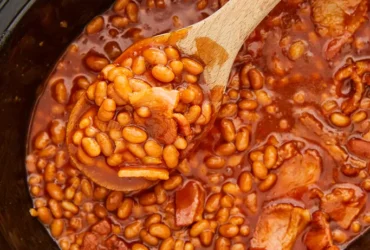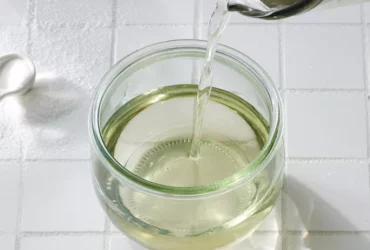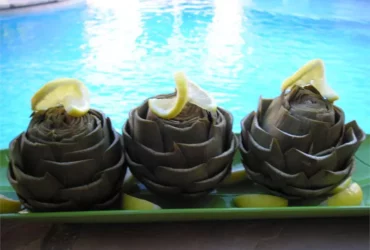Ingredients
Basic Ingredients
The following are the basic ingredients for making a delicious and traditional fig jam recipe:
Key Ingredients
- Fresh Figs: 2 pounds (or about 4-6 cups) of fresh, ripe figs. Brown Turkey or Celeste are good varieties to use.
- Granulated Sugar: 1 cup of granulated sugar. This will help balance out the sweetness and tartness of the figs.
- Lemon Juice: 2 tablespoons of freshly squeezed lemon juice. This adds a touch of acidity to the jam and helps bring out the flavor of the figs.
- Water: 1/4 cup of water. You can use more or less depending on how thick or thin you like your jam.
- Optional: Spices and Flavorings (such as cinnamon sticks, cloves, or orange zest)
Additional ingredients that may be used to enhance the flavor of the fig jam:
- Pectin: A natural occurring substance found in fruit that helps thicken jam. You can use commercial pectin powder or homemade pectin (made by cooking down apple cores and peels). If using commercial pectin, follow package instructions for the correct amount to add.
- Spices: Such as cinnamon sticks, cloves, or a pinch of salt to bring out the flavors of the figs.
Optional ingredients that can be added to create unique flavor variations:
- Bourbon or Brandy: Add a tablespoon or two for an adult twist on traditional fig jam.
- Nuts or Seeds: Chopped almonds, pistachios, or sesame seeds add texture and crunch to the jam.
1 cup of fresh or frozen figs
Fresh or frozen figs are a crucial ingredient in making delicious homemade jam. They provide natural sweetness, rich flavor, and a burst of juicy texture to the finished product.
When selecting fresh figs for your recipe, look for ones that are plump, tender, and have a vibrant green or purple color, depending on the variety. Some popular types of figs used in jam-making include Black Jack, Brown Turkey, and Celeste.
Frozen figs can be just as good as fresh ones, especially if they’re not in season. They retain their flavor and texture well when frozen and are often less expensive than fresh figs. Just thaw them according to the package instructions before using them in your recipe.
The amount of sugar needed in this recipe will depend on the sweetness level of your figs. If you prefer a sweeter jam, use 1 cup of sugar. For a slightly tart flavor, reduce it to 3/4 cup or even less, depending on your taste preferences.
Other essential ingredients for this recipe include pectin, lemon juice, and spices like cinnamon and nutmeg. However, the star ingredient – fresh or frozen figs – is where you can experiment with different varieties to create unique flavor profiles.
The freshness of your figs will significantly impact the final taste and texture of your jam. Fresh figs have a more intense flavor and firmer texture than dried or cooked ones. Using high-quality, flavorful figs will result in a jam that’s worth enjoying all year round.
1/4 cup of granulated sugar
To make a delicious fig jam, you’ll need to start with some essential ingredients, including:
- Sugar 1/4 cup of granulated sugar is the perfect amount to add just the right balance of sweetness to your fig jam.
- Fresh Figs A cup and a half of fresh or dried figs, depending on their ripeness and desired level of sweetness in the final product.
- Water About 1/4 cup of water helps to bring everything together and achieve a smooth, jam-like consistency.
- Lemon Juice A squeeze or two of fresh lemon juice adds a touch of brightness and acidity to balance out the richness of the figs.
The granulated sugar is especially important in this recipe because it helps to:
- Enhance the natural sweetness of the figs
- Add a subtle depth and complexity to the flavor profile
- Help to preserve the jam by inhibiting the growth of bacteria and mold
When using granulated sugar in your fig jam recipe, make sure to:
- Use a high-quality, pure cane sugar for the best flavor and texture
- Measure out the correct amount to avoid adding too much or too little sugar to the mix
- Combine the sugar with the figs, water, and lemon juice in a saucepan over medium heat to create a smooth, syrupy consistency
With these ingredients and guidelines in mind, you’re well on your way to creating a delicious batch of homemade fig jam that’s perfect for topping toast, yogurt, or using as a glaze for meats and cheeses.
The ingredients required to make a delicious fig jam recipe are relatively simple, yet the quality of each component can greatly impact the flavor and texture of the final product.
For this recipe, you will need fresh or dried figs as the primary ingredient. Fresh figs are best used during their peak season, usually from summer to early fall, when they are sweet and succulent. Dried figs, on the other hand, can be used throughout the year and provide a chewier texture.
In addition to the figs, you will need granulated sugar to balance out the sweetness of the fruit and help preserve it. The ratio of sugar to figs can vary depending on personal preference, but a general rule of thumb is to use 1 cup of sugar for every 2 cups of chopped figs.
Other ingredients that are often added to fig jam include pectin, a natural occurring substance found in the cell walls of fruits, and lemon juice or vinegar to enhance flavor and act as a preservative. Some recipes may also call for spices like cinnamon or nutmeg to add depth and warmth to the jam.
It’s worth noting that some fig jam recipes may include additional ingredients such as water or wine to help thin out the jam and create a more spreadable consistency. However, these can be adjusted based on personal preference and the desired texture of the final product.
In terms of specific quantities, here is a rough guide for making a small batch of fig jam:
- 1 cup chopped fresh or dried figs
- 1/2 cup granulated sugar
- 1 tablespoon pectin (optional)
- 1 tablespoon lemon juice or vinegar
- 1/4 teaspoon ground cinnamon (optional)
Of course, these quantities can be adjusted based on personal preference and the desired consistency of the final product. It’s also worth noting that some fig jam recipes may use a combination of sugar and honey or other sweeteners to create a more complex flavor profile.
In summary, the ingredients required for making a delicious fig jam recipe are relatively simple, yet the quality and ratio of each component can greatly impact the final product. By using high-quality figs, balancing out the sweetness with granulated sugar, and adding optional ingredients like pectin, lemon juice or vinegar, and spices, you can create a unique and delicious spread that’s perfect for topping toast, yogurt, or using as a filling for cakes and pastries.
1 tablespoon of lemon juice
The ingredients required for this recipe are as follows:
1 tablespoon of lemon juice
This ingredient serves several purposes in the fig jam recipe. Firstly, it adds a tangy flavor to balance out the sweetness of the figs. Secondly, it helps to enhance the overall brightness and clarity of the jam. The acidity in the lemon juice also plays a crucial role in breaking down the pectin present in the figs, resulting in a smoother texture.
1 cup of brown sugar
This type of sugar is preferred for its rich flavor and ability to caramelize well when cooked. The sweetness level can be adjusted according to personal preference by adding more or less brown sugar.
2 cups of chopped fresh figs
Fresh, ripe figs are the star ingredient in this recipe. They provide a deep, rich flavor and a luxurious texture to the jam. It’s essential to choose firm, dark-skinned figs for the best results.
1/4 cup of water : This ingredient is used to thin out the jam to achieve the desired consistency.
When it comes to using lemon juice in this recipe, there are a few things to keep in mind. Firstly, use fresh lemons for the best flavor. Bottled or artificial lemon juice can give an unpleasant taste to the fig jam. Secondly, don’t overdo it with the lemon juice – 1 tablespoon is sufficient for balancing out the flavors.
In terms of measurement, it’s crucial to use a precise measuring spoon to get the right amount of lemon juice. This will help maintain the perfect balance between sweet and tangy in your fig jam.
1/4 teaspoon of salt
Salt plays a crucial role in enhancing the flavor of the fig jam, as it helps to balance out the sweetness of the figs and prevents the jam from becoming too cloying. A small amount of salt is all that’s needed, so 1/4 teaspoon is a good starting point.
It’s worth noting that using salt in the fig jam can help to bring out the natural flavors of the figs, rather than just masking them with sweetness. By incorporating a small amount of salt, you can create a more complex and interesting flavor profile in your jam.
When measuring out 1/4 teaspoon of salt, it’s best to use a clean and dry spoon to scoop it into the mixture. This will help to prevent any moisture from affecting the measurement, ensuring that the correct amount of salt is added to the figs.
If you’re looking for a more precise measurement, you can also use a digital kitchen scale to measure out 1 gram of salt. This is equivalent to about 1/4 teaspoon and will ensure that the correct amount of salt is added to your jam.
To make a delicious Fig Jam recipe, you’ll need to gather some essential ingredients. Here are the key components:
- Fig Fruits : Fresh or dried figs can be used, but fresh ones provide better flavor and texture.
- Sugar : Granulated sugar is a must-have for balancing the natural sweetness of the figs.
- Water : You’ll need some water to cook the jam, but not too much, as it can thin out the mixture.
- Pectin : Optional but recommended, pectin helps thicken the jam and gives it a more gel-like texture.
- Spices and Flavorings :
You can add some extra flavor to your fig jam by incorporating spices or other ingredients. Here are some options:
- Cinnamon : This warm spice pairs well with the sweetness of the figs.
- Lemon Juice : A squeeze of fresh lemon juice adds a tangy and refreshing touch to the jam.
- Ginger : Grated ginger can add a spicy kick and help preserve the jam by creating an acidic environment that’s inhospitable to bacterial growth.
Before starting your Fig Jam recipe, ensure you have all these ingredients on hand. This will save time during the cooking process and allow you to focus on perfecting your jam-making skills!
Instructions
Preparing the Figs
To prepare the figs for making jam, follow these steps:
Step 1: Choose Ripe Figs
- Pick a variety of ripe figs that are sweet and have a rich flavor.
- Select figs with a deep red or purple color, as they will yield the best results.
Step 2: Wash the Figs
- Rinse the figs under cold running water to remove any dirt or debris.
- Gently scrub the figs with a soft brush to remove any stubborn dirt or pesticide residue.
Step 3: Sterilize the Figs
- Bring a large pot of water to a boil and then reduce the heat to a simmer.
- Submerge the figs in the hot water bath for 10-15 minutes, or until they are sterilized.
Step 4: Peel the Figs
- Remove the figs from the pot and place them on a clean towel to dry.
- Using a sharp knife or vegetable peeler, gently remove the skin from each fig.
Step 5: Chop the Figs
- Once the figs are peeled, place them on a cutting board and chop them into small pieces.
- The size of the chopped figs will depend on your desired consistency for the jam.
Step 6: Crush the Figs (Optional)
- If you want a smoother jam, place the chopped figs in a blender or food processor and puree until they are well combined.
- Be careful not to over-process the figs, as this can make them too soft and runny.
Rinse and pat dry fresh or frozen figs
To prepare your figs for the jam recipe, it’s essential to rinse and pat them dry thoroughly. If using frozen figs, start by removing them from the freezer and leaving them at room temperature for a few hours to thaw.
Next, place the figs in a fine-mesh strainer under cold running water. This will help remove any dirt or debris that may be stuck to their surface. Gently agitate the figs with your hands while they’re still in the strainer to ensure all the excess moisture is washed away.
After rinsing, carefully pick up each fig and gently pat it dry with a clean kitchen towel. You can also use paper towels for this step if you prefer. The goal is to remove as much moisture as possible without damaging the delicate skin of the figs.
Once your figs are completely dry, place them on a baking sheet lined with parchment paper and let them air-dry for about 30 minutes to an hour. This will help remove any excess moisture that may still be present after rinsing and pat drying.
Now your figs are ready to use in the jam recipe! Simply chop or puree them as required, and proceed with cooking the jam according to the instructions provided in this recipe.
The art of following instructions is crucial when it comes to cooking up a delicious batch of fig jam. With so many variables at play, from temperature and timing to ingredient quality and preparation, it’s easy to see how even the most well-intentioned cooks can go awry.
To ensure that your fig jam turns out perfectly, start by carefully reading through the recipe. Look for any special notes or warnings that may apply to your situation – for example, if you’re using a certain type of sugar or substituting in different spices.
Key Ingredients and Equipment
You’ll need the following ingredients to make this fig jam recipe:
- 1 pound fresh or dried figs, chopped
- 1 cup granulated sugar
- 1/4 cup honey or maple syrup (optional)
- 1 tablespoon lemon juice
- 1/4 teaspoon salt
- 1/2 teaspoon ground cinnamon (optional)
- Water, as needed
In addition to these ingredients, you’ll also need:
- A large pot with a heavy bottom (stainless steel or enameled cast iron work well)
- A candy thermometer
- A glass jar or container for storing the finished jam
Step-by-Step Instructions
- Combine the chopped figs, sugar, honey or maple syrup (if using), lemon juice, and salt in a large pot. If using dried figs, you may need to soak them in water for several hours before proceeding.
- Cook the mixture over medium heat, stirring occasionally, until the sugar has dissolved and the mixture is heated through.
- Bring the mixture to a boil, then reduce the heat to medium-low and simmer for 15-20 minutes, or until the jam has thickened and passed the “wrinkle test” (see below).
The wrinkle test involves placing a small amount of the jam on a chilled plate. If the jam wrinkles when pushed with your finger, it’s ready. If not, continue cooking for another 5-10 minutes and testing again.
Tips and Variations
- For a clearer jam, use a finer mesh strainer or cheesecloth to remove the seeds and excess pulp from the figs before cooking.
- To make a more intense jam, cook the mixture for a longer period of time or add more sugar.
- For a spicier jam, add more cinnamon or try using other spices like ginger or nutmeg.
By following these instructions carefully and making any necessary adjustments along the way, you should be able to create a delicious batch of homemade fig jam that will impress friends and family alike.
Cut in half lengthwise
To make this delicious fig jam recipe, you’ll need to follow these instructions carefully.
Ingredients and Equipment Needed
- 1 lb fresh or dried figs, stems removed
- 1 cup granulated sugar
- 1/4 cup water
- 1 tablespoon lemon juice
- 1 package (0.25 oz) powdered pectin
- A large pot with a heavy bottom (stainless steel or enameled cast iron)
- A wooden spoon or silicone spatula for stirring
- A clean glass jar with a tight-fitting lid for storing the jam
Step-by-Step Instructions
- Rinse and chop the figs, if using fresh. If using dried figs, rehydrate them by soaking them in water for several hours or overnight.
- In a large pot, combine the chopped figs, sugar, water, and lemon juice.
- Heat the mixture over medium heat, stirring occasionally, until the sugar has dissolved and the figs are soft.
- Bring the mixture to a boil, then reduce the heat to medium-low and simmer for about 20-25 minutes, or until the jam has thickened and passed the “wrinkle test”.
- Add the powdered pectin to the pot and stir well. Continue to simmer for another 5-10 minutes, or until the jam has reached your desired consistency.
- Remove the pot from the heat and let it cool slightly.
- Use a clean glass jar with a tight-fitting lid to store the fig jam. Let it cool completely before refrigerating or freezing it.
Cut in Half Lengthwise in Language English
To cut something in half lengthwise means to divide it into two equal parts along its longest dimension, usually from top to bottom or vice versa.
Remove seeds and stems
To make the delicious Fig Jam Recipe, it’s essential to follow these steps carefully.
The first step involves removing the seeds and stems from the fresh or dried figs. This process requires some patience and attention to detail. To remove the seeds and stems effectively, start by rinsing the figs under cold running water to clean them thoroughly.
Next, pat the figs dry with a paper towel to remove excess moisture. This helps prevent any bacterial growth and ensures that your jam turns out delicious.
Now, cut the figs in half lengthwise and gently pull out the seeds and stems. You can use your fingers or a small knife to carefully extract these parts. Be careful not to tear the surrounding flesh of the figs.
Continue this process until all the figs have been seeded and stemmed. You may want to work over a bowl to catch any stray seeds or debris.
Once you’ve removed the seeds and stems, chop the figs coarsely and set them aside for later use in your Fig Jam Recipe. The next step will involve cooking these chopped figs with sugar and other ingredients to create the perfect jam.
Instructions play a crucial role in ensuring that tasks are carried out efficiently and effectively. In the context of baking a delicious fig jam recipe, instructions serve as a guide for the cook to follow, allowing them to create a sweet and tangy preserve with ease.
When writing instructions for a recipe like fig jam, it’s essential to be clear and concise in the language used. This means avoiding ambiguity and providing step-by-step guidance that covers all aspects of the process, from preparation to cooking and storage.
The first instruction should focus on preparing the ingredients, which may include washing and chopping fresh figs, measuring out sugar and spices, and heating a suitable liquid such as water or wine. It’s also crucial to specify the type and quantity of equipment needed, like saucepans, spoons, and jars.
The cooking process is where the magic happens, transforming raw ingredients into a luscious spread that can be enjoyed on toast, yogurt, or even used as an ingredient in other recipes. Instructions at this stage should cover topics such as temperature control, simmering times, and stirring techniques to prevent scorching.
Once the jam has been cooked to perfection, instructions for cooling and storing it become essential. This may involve allowing the jam to cool slightly before transferring it into sterilized jars, followed by sealing them tightly and labeling them with the date and contents.
A well-written instruction manual is an indispensable resource for cooks of all skill levels, providing a tried-and-tested method that can be relied upon to produce consistently delicious results. In the case of this fig jam recipe, following these instructions will yield a delightful preserve perfect for serving at social gatherings or as a sweet treat on its own.
Tips and Variations
Pectin Content
Pectin content plays a crucial role in the preparation and consistency of fig jam. Pectin is a naturally occurring soluble fiber found in fruit, particularly in the skin and core of fruits like apples and pears, but also in significant amounts within figs.
In general, figs are high in pectin due to their unique cell structure. When cooked, the pectin in figs breaks down, creating a gel-like substance that helps thicken jam. However, not all types of figs are created equal when it comes to their pectin content.
Some varieties of figs, such as the ‘Brown Turkey’ or ‘Black Jack’, contain more pectin than others like ‘Celeste’ or ‘Alger’. To achieve a set jam with fewer added commercial pectins, choose figs known for their high natural pectin content.
Another key aspect of managing pectin content in fig jam is cooking time and temperature. High heat can break down the pectin more quickly than low heat, resulting in a gel that’s too loose or even runny.
Here are some tips to achieve the perfect balance: cook at lower temperatures (around 190°F – 200°F) for longer periods of time; use a candy thermometer to ensure the jam reaches the correct temperature range without overheating; and test the jam regularly by dropping small amounts onto a chilled plate – if it holds its shape, the jam is set.
Some variations on traditional fig jam recipes involve adding pectin-rich ingredients like citrus peel or juice. These additions can enhance the flavor profile of the jam while also increasing its natural pectin content. Alternatively, using other fruits with high pectin levels such as apples or quinces can add a rich and complex taste to the jam.
Keep in mind that when working with different types of figs and adding various ingredients, you may need to adjust your cooking time and temperature accordingly. Pectin content is just one aspect to consider when making homemade jams – but mastering it will yield more satisfying results and a delicious spread for toast, yogurt, or using as a cake filling.
University of California, Division of Agriculture and Natural Resources recommends using a candy thermometer to monitor the jam’s gel point.
The process of making fig jam can be modified to accommodate different tastes and textures by incorporating various tips and variations into the recipe.
One of the key considerations when preparing fig jam is achieving the perfect gel point. According to the University of California, Division of Agriculture and Natural Resources, using a candy thermometer is an effective way to monitor the jam’s temperature and ensure it reaches the desired consistency.
In addition to using a candy thermometer, cooks can also employ other methods to gauge the jam’s set point. For instance, performing the ‘wrinkle test’ involves placing a small amount of the cooled jam on a chilled plate and observing whether it wrinkles when pushed with your finger.
Another approach is to rely on the jam’s appearance and texture. When the mixture has thickened sufficiently, it should have formed a ‘soft ball’ or a syrupy consistency that coats the back of a spoon.
Cooking techniques can also be adjusted to create different variations of fig jam. For example, cooking the figs for a longer period will break down their fibers and result in a smoother texture, while shorter cooking times preserve the fruit’s natural texture.
To add depth to the flavor profile, cooks may choose to incorporate other ingredients into the fig jam recipe. A common addition is spices such as cinnamon, cloves, or nutmeg, which complement the sweetness of the figs and create an aromatic aroma.
Cream or butter can also be added to enrich the texture and enhance the jam’s spreadability. The choice of sweetener used in the recipe may also influence the final product’s flavor. For instance, using brown sugar will impart a richer, caramel-like taste compared to refined white sugar.
The USDA provides guidelines for safe canning procedures.
The art of making fig jam at home offers a world of possibilities, from experimenting with unique flavor combinations to adjusting the level of sweetness and spice. The USDA provides guidelines for safe canning procedures, ensuring that your homemade preserves are not only delicious but also shelf-stable.
Here are some tips and variations to take your fig jam recipe to the next level:
Flavor Combinations
- Lemon-Ginger Fig Jam: Add a hint of citrus with lemon zest and juice, paired with the warm, spicy flavor of crystallized ginger.
- Balsamic Fig Jam: Infuse your jam with the rich, tangy taste of balsamic vinegar for a unique twist on traditional fig jam.
Spice Up Your Jam
- Cinnamon-Infused Fig Jam: Add a pinch of warm cinnamon to your jam for a cozy, autumnal flavor.
- Nutmeg-Fig Jam: Grate in some fresh nutmeg for a hint of sweetness and warmth.
Adjusting the Sweetness Level
- Dryer Fig Jam: Use less sugar or honey to create a more intense, concentrated fig flavor.
- Sweeter Fig Jam: Add more sugar or honey to balance out the tartness of the figs.
Adding Fresh Herbs
- Minty Fresh Fig Jam: Chiffonade fresh mint leaves and add them to your jam for a refreshing twist on traditional flavors.
- Rosemary-Garlic Fig Jam: Infuse your jam with the earthy, herbaceous flavor of rosemary and garlic.
When experimenting with new flavors, remember to taste as you go and adjust seasoning accordingly. The key to successful canning is ensuring that your jam reaches a consistent temperature throughout the canning process, which is typically around 212°F (100°C). Always follow safe canning procedures and guidelines provided by the USDA to ensure the shelf-stability of your homemade preserves.
- Best LeadsGorilla Alternatives for 2025 - April 22, 2025
- Best Leadzai Alternatives for 2025 - April 22, 2025
- Best LeadSwift Alternatives for 2025 - April 21, 2025

